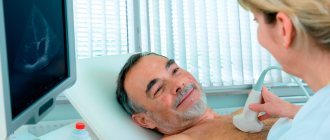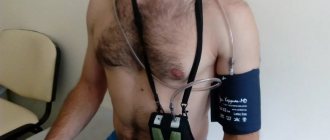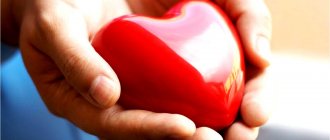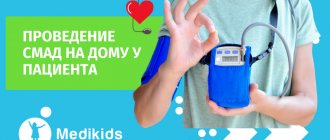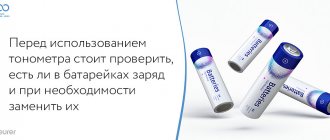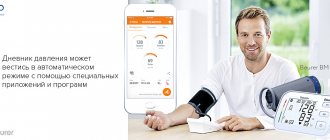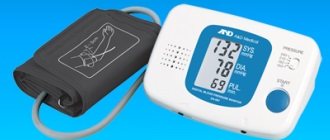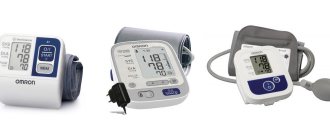The most common cause of death in our time is diseases of the cardiovascular system. More than a million people die from them every year in our country! And it’s not bad medicine that’s to blame for this - modern cardiology has a wide range of opportunities to help sick people. But the problem is that many of us go to the doctor too late, often arriving at the hospital already in an ambulance, with a heart attack or stroke.
Along with atherosclerosis, the development of which is difficult to prevent, one of the causes of life-threatening conditions (such as impaired blood supply to the heart or brain) is the “trifling”... hypertension. Not everyone knows that this disease can develop over many years, starting at a young age, asymptomatically and gradually. In their 30s, few people pay attention to an increase in upper or lower blood pressure by several units, and not everyone has a tonometer at home. And those who accidentally find out about their hypertension often brush it off: just take pills when nothing bothers you!
Another problem associated with the diagnosis of hypertension is the “white coat syndrome.” Some of us have retained an unconscious fear of doctors and medical institutions since childhood. Therefore, at an appointment with a cardiologist, a tonometer may show unreasonably high blood pressure numbers, while there is no illness. And for some in the hospital, the pressure, on the contrary, drops, while during work or at night its values can be high... How to catch insidious hypertension?
A good way to see an objective picture is to conduct 24-hour blood pressure monitoring (ABPM). During this procedure, the patient wears a special device on his body for 1-2 days that records blood pressure readings in conditions as close as possible to natural ones. Based on the results of the study, the doctor receives all the necessary information in order to confirm or refute the presence of hypertension or symptomatic arterial hypertension (increased blood pressure caused by a particular disease).
Another useful use of ABPM may be to monitor the treatment of patients with already diagnosed hypertension. In this case, they continue to take medications during the procedure.
Sometimes ABPM is carried out simultaneously with Holter monitoring (24-hour ECG monitoring). This combined study significantly expands the possibilities for diagnosing cardiovascular diseases.
ABPM indications
ABPM is prescribed in the following cases:
- if you suspect “white coat syndrome”;
- with a “borderline” increase in blood pressure (when its numbers are not high enough to immediately make a diagnosis, but cause caution in the doctor);
- with the first detected increase in blood pressure;
- if you suspect the symptomatic nature of hypertension (for example, when the increase in pressure is associated with stress before consulting a doctor or occurs due to a concomitant disease);
- when examining young people with unfavorable heredity for hypertension;
- if the patient periodically experiences fainting, to exclude hypotension (low blood pressure);
- in patients with already established hypertension, coronary heart disease and vascular lesions of the brain to identify critical blood pressure values;
- to evaluate and adjust drug therapy.
What is white coat hypertension?
White coat hypertension, or so-called white coat syndrome, is a condition in which a person's blood pressure is elevated when measured by a doctor or nurse, but is lower when measured at home by the patient or family members.
It often occurs during a medical examination. Basically, the upper blood pressure in such cases reaches 140-150 mmHg, while the lower blood pressure is within normal limits. Sometimes accompanied by the following symptoms:
- rapid heartbeat;
- sweating;
- nausea;
- dizziness.
Can blood pressure increase when you see a doctor and what is the reason for this?
The human body is able to respond to stress by increasing blood pressure. So it is likely that the appearance of a “white coat” is a triggering factor and leads to fluctuations in blood pressure. Many people experience a number of unpleasant sensations when visiting medical institutions:
- anxiety;
- fear of diagnostic procedures and examination by a doctor;
- fear of injections, blood;
- fear for the state of one’s health and the results of examinations.
These experiences will be the reason. A person’s consciousness is able to associate the doctor’s white uniform with his feelings, to which the body responds by increasing blood pressure. In this case, the reaction to psycho-emotional stress is considered normal. However, over time, a conditioned reflex is formed, and then a fear of such situations (phobia). Every time a doctor sees a similar patient, there is an increase in blood pressure. This needs to be controlled, since in the future a person can react in this way to any strong emotions, which has a negative impact on health.
How to determine the cause of “hypertension” in each specific case?
In doubtful cases, the patient is offered to independently monitor blood pressure at home for 7 days, at least 3-4 times a day, recording the results on a blood pressure control sheet, indicating the time of measurement. At the end of the study, the person with the “diary” comes to the doctor. The doctor interprets the results obtained and determines further tactics for managing such a patient.
How is 24-hour blood pressure monitoring performed?
To undergo ABPM, you must make an appointment with a cardiologist. The study is carried out on an outpatient basis: the tonometer cuff is fixed on the patient’s shoulder, as in a normal blood pressure measurement, and the device itself (its weight is no more than 300 g) is attached to the belt, under clothing. After consulting a doctor, you can go home or work. The device will automatically, at certain intervals, measure your blood pressure and record the data obtained. ABPM does not interfere with leading a normal lifestyle: eating, sleeping and even playing sports. Your doctor will likely ask you to keep a diary to record episodes of physical activity (climbing stairs, lifting heavy objects), periods of rest, sleep, waking up at night, and symptoms of discomfort, such as heart pain or dizziness, if you experience them. After 24 or 48 hours (depending on the recommended duration of the study), you will need to turn off the device and return to the cardiologist for a consultation. He will decipher the data received, comparing it with the information in your diary, and make a conclusion about the state of your health.
There are simple recommendations for patients undergoing daily blood pressure monitoring:
Watch the position of the cuff on your shoulder. Its lower edge should be fixed 1-2 fingers above the elbow. If you feel that the cuff has slipped off your arm, be sure to adjust it.
Before each measurement, the ABPM device beeps. If you have the opportunity, do not move while measuring pressure, so the results will be more accurate. While the device pumps air into the cuff, relax your hand. At the end of the measurement, a repeat beep will sound.
Make sure that the tube connecting the monitor to the cuff is not pinched by clothing or when you are sitting or lying down.
Do not allow water to come into contact with the device (do not take a shower during the study), and also try to avoid prolonged stay near sources of electromagnetic radiation (power lines, microwave ovens, television and radio transmitters) during ABPM.
If you think that the ABPM device is out of order, do not try to fix it yourself and do not disassemble it. Report the incident to your healthcare provider.
Risk group
Most often, white coat hypertension is observed in impressionable individuals. What makes them nervous is that they take going to the doctor to heart. Also at risk are individuals who are weak in spirit. People with mental disorders also fall into this group; their fear of medical workers is more obvious and can lead to a panic attack.
In addition, people who lead an unhealthy lifestyle and have bad habits are at risk.
It is important to note that the syndrome can manifest itself in children one year old and older (children under one year old quickly forget everything) - this is most often associated with a child’s bad experience: without warning, blood was taken from a finger, and a painful injection was given.
These negative emotions are a source of anxiety.
What does the doctor see from the ABPM results?
In addition to the direct increase in blood pressure in various situations, the cardiologist examines a person’s circadian rhythms - the natural decrease or increase in blood pressure during the day. Deviations from the normal rhythm may be a harbinger of hypertension or other health problems. Based on the information received, the doctor may recommend that you change your diet, give up bad habits, or undergo additional examinations. All this will help to avoid severe cardiovascular diseases in the future and maintain health and well-being for a long time!
Based on the data obtained during diagnosis, specialists from the Department of Cardiovascular Pathology of the European Clinic Siena-Med will determine a comprehensive treatment, which will include modern medication programs and a complex of computer hardware and physiotherapeutic methods.
We can help you. Remember that timely diagnosis is the key to high-quality and highly effective treatment
What does ABPM diagnostics show?
Blood pressure monitoring allows you to:
- Confirm or refute the preliminary diagnosis of arterial hypertension and arterial hypotension;
- evaluate the effectiveness of previously prescribed treatment;
- select and adjust a drug therapy regimen to prevent episodes of hypo- and hypertension, especially at night;
- clarify the form of arterial hypertension (mild, borderline, moderate, severe);
- identify transient hypotensive and hypertensive episodes, orthostatic reactions.
Pharmacies Pharmakon
Why is measuring blood pressure so important?
Since high blood pressure is not always noticeable, a person can live with high blood pressure for many years. However, if left untreated, high blood pressure can lead to serious illnesses that are only recognized when the first consequences appear. The danger can only be recognized with regular blood pressure monitoring. Self-measurement of blood pressure in a familiar environment reflects blood pressure under normal conditions, as opposed to measurements taken by a doctor in a clinic.
Why do I get different readings when I measure my BP several times a day?
Because the heartbeat changes constantly throughout the day, one BP measurement shows one value at one time. From heartbeat to heartbeat, human blood pressure changes about 100,000 times a day. Only regular measurements at the same time of day and under the same conditions can give comparable indicators and can be used to compare different blood pressure values.
Why should blood pressure always be measured at the same time of day?
Many functions of the human body are subject to daily biorhythms, which have similar characteristics when environmental conditions are similar. Likewise, blood pressure is subject to constant daily biorhythms: it rises in the morning, shortly before getting out of bed, falls during the day and rises again when evening comes. Blood pressure is lowest at night. In order to compare blood pressure readings with one another, measurements must be taken at the same time. Measurements taken in the morning cannot be compared with evening measurements.
Why do my doctor get completely different results than what I get at home?
Blood pressure readings can only be compared with each other if both measurements were taken when you were in a relaxed state and always at the same time of day. Studies have shown that 25% of people have higher readings in the doctor's office than at home. This phenomenon has been called the “white coat effect” or “white coat hypertension.” This is not a disease, since high blood pressure in this case is caused by a stressful situation and nervousness during a visit to the doctor. However, such elevated blood pressure readings may be the first indicator of impending hypertension in the future.
My blood pressure monitor gives different results all the time.
Blood pressure is not a constant value, since it depends on the mental and physical state at a certain moment, the time of day and the conditions of measurement. Therefore, you must measure blood pressure under the same conditions, i.e. try to measure your blood pressure at the same time of day and rest at least 5 minutes before. However, for many people, blood pressure fluctuates, even despite rest. In this case, it is recommended to measure blood pressure two or three times at 1-minute intervals and calculate the average between these measurements. If something still confuses you, contact your local RosTest office or Metrological Laboratory to have your device checked.
What can I do to prevent external factors from affecting the measurement results?
- Avoid drinking alcohol and nicotine for an hour before the measurement.
- Do not drink coffee immediately before the measurement.
- The bladder must be empty before measurement. A full bladder increases blood pressure by approximately 10 mmHg.
- Do not measure your blood pressure if you are stressed, in pain, or afraid. These factors can change blood pressure.
- Make sure the cuff is worn correctly when taking measurements. When measuring blood pressure on the upper arm, the border of the cuff should be 2.5 cm above the bend of the elbow. When measuring blood pressure at the wrist, place the cuff 1 cm above the wrist crease.
- When measuring blood pressure at the wrist or upper arm, ensure that the measurement site is at the level of the heart - if the position moves by 1.5 cm, the pressure increases by 1 mmHg.
- Relax your arm muscles while measuring. Muscle tension increases blood pressure by approximately 10 mmHg.
- Do not talk while taking measurements. Talking during measurement can increase blood pressure by 6-7 mmHg. Art.
- The upper arm should not be pinched by clothing when measuring blood pressure on the upper arm. It is best to remove all clothing from the shoulder.
- Before taking measurements on your upper arm, make sure you put the cuff on correctly. If you can fit 2 fingers under the cuff at the top and bottom, you can start measuring. If the cuff is too loose or too tight, the results will be either too high or too low, respectively.
- Rest for at least 1 minute before measuring again.
- Remember that blood pressure is subject to circadian rhythms and can change depending on the time of day and the needs of the body at a certain moment. To obtain comparable results, the best solution is to measure your blood pressure at the same time of day.
What does high blood pressure mean?
The World Health Organization (WHO) has adopted a new classification of blood pressure levels: Optimal level < 120/80 Normal < 130/85 Mild hypertension 140-159 / 90-99 Moderate hypertension 160-179 / 100-109 Severe hypertension >180 and >110
Is it possible to measure using the oscillometric method with a pacemaker?
In principle, oscillometric measurement is possible in patients with an implanted pacemaker. However, the work of the pacemaker is not detected by the pulse detection function of the electronic tonometer. If you get meaningless results or the “ERR” symbol on the screen during the measurement, this is not due to the physiological heart rhythm set by the pacemaker. In these cases, oscillometric blood pressure measurement is problematic and it is better to measure pressure using the Korotkoff method (with a stethoscope or microphone). In any case, you should consult your doctor.
What should be done if a person has a pathological rhythm disorder? How to measure blood pressure?
It is impossible to give general recommendations, since there are a large number of different heart rhythm pathologies that should be considered individually. In principle, oscillometric devices can accurately measure blood pressure when pulse signals are discernible. For some arrhythmias, for example, irregular heart rhythm - absolute arrhythmia, oscillometric measurement is not possible due to “lost” and very irregular pulse signals. In this case, a stethoscope should be used. For milder forms or rare episodes of arrhythmia, oscillometric measurement is possible. If in doubt, measurements should be taken several times at 1-minute intervals and the average of several measurements taken. However, each case is individual and you should discuss the details with your doctor.
What should you pay attention to when measuring blood pressure during pregnancy?
High blood pressure during pregnancy occurs in about 10% of expectant mothers. Such cases must be identified and treated carefully. Self-measurement of blood pressure during pregnancy is recommended for every pregnant woman and should be done both by a doctor during a consultation and at home.
Can I change the dosage of my medications based on my blood pressure readings?
Selecting the right combination of appropriate drugs for a patient suffering from hypertension requires an individual treatment plan. You should never change the dosage of a drug taken or prescribed by a doctor on your own. Regular readings of your blood pressure provide your doctor with valuable information to optimize your individual treatment plan. Carefully record your measurements in a blood pressure diary and discuss possible changes in your medication dosage with your doctor.
Should I see my doctor regularly if I measure my blood pressure at home?
Regular blood pressure measurements at home will allow your doctor to assess the profile and dynamics of your blood pressure over several weeks or months and thereby allow for optimal modification of the treatment plan. Measuring blood pressure at home does not replace required visits to the doctor.
Why is it necessary to record readings in a personal blood pressure diary?
A single BP measurement is only a snapshot reading and does not provide an accurate picture of BP levels over the course of a day or several days. Therefore, you should measure your blood pressure two or three times a day, always at the same time. Record the results along with the date and time and medications taken in a BP diary. Blood pressure readings recorded over a long period of time will provide your doctor with a valuable basis for selecting individual therapy.
Why may the first blood pressure reading be different from the previous one?
This is explained by the artery “getting used to” compression. However, it should also be taken into account that the first result of measuring blood pressure is rarely true.
Which model is better to buy for an elderly person suffering from hypertension?
An automatic model for measuring blood pressure at the upper arm (but not at the wrist). In older people, BP measured at the wrist may differ from BP measured at the brachial artery due to atherosclerosis.
When measuring pressure several times in a row, each subsequent reading is lower than the previous one. Why?
The cause is stagnation of blood resulting from too short intervals between measurements. It is enough to increase the intervals between measurements to allow blood circulation to be restored.
Back to section
What to do during a medical examination
What should people do who must undergo a medical examination at work or study? This condition can be prevented if you take a sedative before going to the clinic in the evening and in the morning.
When measuring blood pressure, you should try to monitor your breathing! The air should be inhaled smoothly and exhaled very slowly.
How to prepare for the test
It is recommended to wear comfortable clothing, such as a short-sleeved T-shirt and loose, wide-sleeved outerwear. Before the test (at least 24 hours), you should stop drinking alcohol. There is no ban on pharmaceuticals: before the examination, the patient can take all medications prescribed by the doctor.
The patient may be asked to keep a special diary in which to record important information that may affect blood pressure values. For example:
- the time when a person falls asleep, wakes up, gets out of bed;
- meal times;
- time and name of medications taken;
- any feeling of discomfort;
- other events that can affect blood pressure (stress, exercise, etc.).
Registration of ABPM does not interfere with the patient’s normal life; at this time he can work and perform all daily activities. But there will still be minimal discomfort: it is not recommended to lie on the arm that is wearing the cuff, and you cannot remove it from one arm and put it on the other. It is also important to protect the ABPM device from moisture and direct sunlight.
Forecast. Prevention
The prognosis depends on the level of blood pressure and the presence of complications. Timely initiation of adequate treatment for hypertension contributes to a favorable prognosis.
The best prevention of hypertension is a healthy lifestyle and diet, as well as the elimination of existing risk factors (obesity, inactivity, smoking, chronic stress).[6] In case of existing hypertension, in order to prevent complications, the following recommendations are added to these recommendations:
- women with hypertension before pregnancy need to undergo a full examination before planning pregnancy with treatment adjustment if necessary;[1][5]
- women with hypertension during pregnancy need careful monitoring of their condition and strict adherence to medical prescriptions.[1][2][5]
For the addition and verification of the material, we thank Elena Karchenova , a cardiologist, therapist, and scientific editor of the ProBolesni portal.


